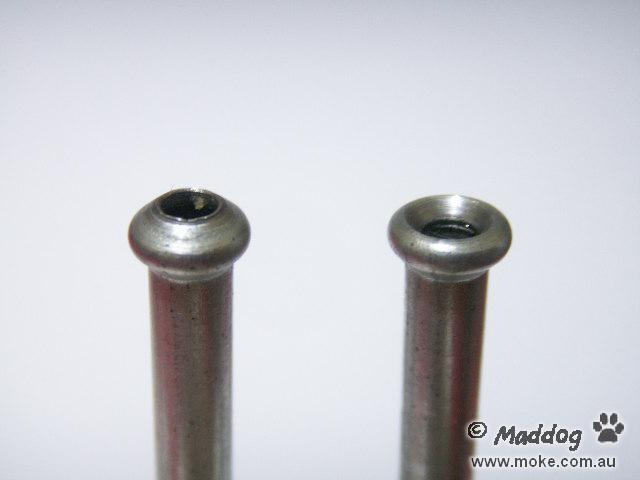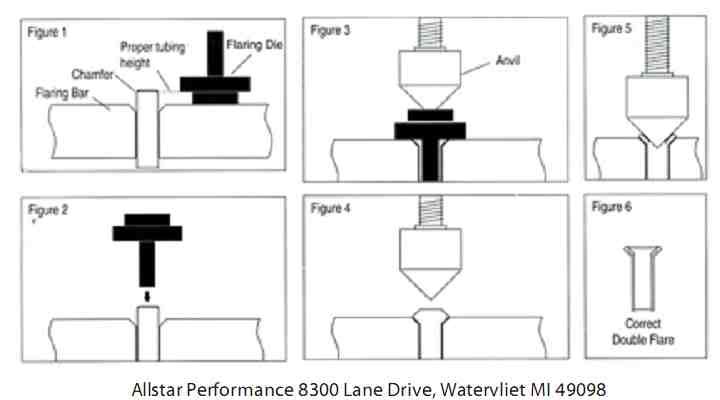What size of brake pipe do I need to purchase to fabricate brake pipes for my '74 Mini 1000?
Is this the correct union to use for my car?
http://www.minispare...Hoses.aspx|Back to shop

Posted 08 January 2014 - 09:19 PM
What size of brake pipe do I need to purchase to fabricate brake pipes for my '74 Mini 1000?
Is this the correct union to use for my car?
http://www.minispare...Hoses.aspx|Back to shop
Posted 08 January 2014 - 09:44 PM
Posted 08 January 2014 - 11:15 PM
HI
this is what you want
much cheaper and thay will post to USA
http://www.ebay.co.u...s-/221338273117
Posted 08 January 2014 - 11:35 PM
I bought mine from here:
http://www.brakeconn...e-38-x-24nf-316
Bit cheaper, and already in the states, for shipping.
Depending on your car, you might find a few other fittings, as well. I've heard that some of the master cylinders are metric threads instead, etc. I've ended up printing out this page and have it hanging in the garage, for reference:
http://www.fedhillus...mon flares6.pdf
And here's a slightly more expensive option:
http://store.fedhillusa.com/p84.aspx
I've used both stores, and found them to be fast shipping, and easy to use. I bought my cunifer line from fedhill, and the connectors from a mix of the two.
Posted 09 January 2014 - 12:43 AM
Hi
Depending on your car, you might find a few other fittings, as well. I've heard that some of the master cylinders are metric threads instead,
yes you are correct but it is only on the very late twinport master with a green tag
Posted 09 January 2014 - 01:20 AM
I think the OP's car will be all unf, but you find metric on much earlier cars than the MPI, and there's always the chance some Metro plumbing has migrated under a previous owner's stewardship.
The yellow band master cylinder (GMC227) has M10x1 & M12x1 unions. The FAM7821 pressure regulator is also M10. It's worthwhile being able to tell the difference as some cylinders are identical, save for the thread type.
Posted 09 January 2014 - 11:02 AM
Hi
Depending on your car, you might find a few other fittings, as well. I've heard that some of the master cylinders are metric threads instead,
yes you are correct but it is only on the very late twinport master with a green tag
Yellow tag onwards are metric, so early 80s.
Posted 09 January 2014 - 12:39 PM
Thanks to all.
I've not yet attempted flaring. I'm planning to purchase this tool.
http://www.harborfre...-kit-66534.html
It got oddly opposed reviews. Some say it's brilliant and others were unable to make proper flares.
Posted 09 January 2014 - 02:17 PM
Posted 09 January 2014 - 02:35 PM
The best flaring tools are the ones that operate by cam action and are bench mounted, but tend to be around £150 in the UK.
The ones in the link are OK for limited home use though. Check they have the correct SAE dies with them. Your '74 car should be all UNF fittings as already suggested and these use SAE flares. Male unions use a single flare. Female use a double flare.
Metric fittings use a different flare, so need a different die. Metric fittings started with the black tag tandem cylinder (1978) which was later superseded to the yellow tag one.
Edited by ado15, 09 January 2014 - 02:36 PM.
Posted 09 January 2014 - 02:46 PM
Is the brake line double flared or bubble flared and does it matter with NiCu brake line?
Posted 09 January 2014 - 02:50 PM
Is the brake line double flared or bubble flared and does it matter with NiCu brake line?
A terminology problem here! Common language and all that ![]()
Single flare = bubble flare. This is used for male fittings. Female should really be double flared. You might find a bubble (single!) flare will 'self form' in a female fitting, but it would be better to do it right in the first place.
Posted 09 January 2014 - 05:11 PM
Bubble and double flares

Single flares are not used in automotive applications.
Method of doing flares. Stop at figure 4 for the bubble flare.

Posted 10 January 2014 - 12:29 AM
If you read the fedhill pdf above, it describes some of the flares.
In the mini, you'll mostly be doing bubble/DIN flares. That tool linked doesn't seem to do those types of flares. If you do the first operation of a double-flare, you will get something _similar_ to a bubble flare, and it might work -- or it might leak at an inopportune moment. My flaring tool has separate dies for doing op 1 of a 45degree double flare versus doing a bubble flare.
0 members, 1 guests, 0 anonymous users